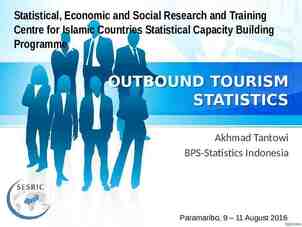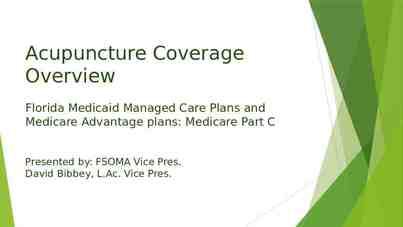MARITIME ADMINISTRATION Program Overview September 2016
24 Slides2.67 MB

MARITIME ADMINISTRATION Program Overview September 2016

MARAD Overview The Maritime Administration is the agency within the U.S. Department of Transportation dealing with waterborne transportation. Its programs promote the use of waterborne transportation and its seamless integration with other segments of the transportation system, and the viability of the U.S. merchant marine. Works in many areas involving ships and shipping, shipbuilding, port operations, vessel operations, national security, environment, and safety.

Overview Cont. The Maritime Administration is also charged with maintaining the health of the merchant marine – The agency provides support and information for current mariners, extensive support for educating future mariners, Maintains a fleet of cargo ships in reserve to provide surge sea-lift during war and national emergencies Recently realigned many of its functions, to revitalize its role as an industry facilitator, and to bring greater focus to the areas of environment and safety.

NATIONAL DEFENSE

National Defense Reserve Fleet/Ready Reserve Force MARAD manages and maintains a fleet of Governmentowned vessels in the National Defense Reserve Fleet (NDRF), including 46 vessels in the Ready Reserve Force (RRF). Vessels in the RRF are kept at sites around the country in a reduced operating status (ROS). The RRF provides a ready source of "surge" shipping, available when needed by the Department of Defense’s U.S. Transportation Command (USTRANSCOM), to support rapid deployment of U.S. military forces.

Maritime Security Program MSP fleet consists of 60 active, commercially viable, militarily useful, privately-owned vessels. – Provides assured access to U.S. commercial sealift capability to support DOD. – Provides access not only to modern vessels and vessel capacity, but also a global intermodal transportation network. – Provides employment for 2,400 U.S. citizen merchant mariners needed to crew government-owned vessels.

Jones Act The Jones Act (46 U.S.C. § 55102) requires that merchandise being transported by water between U.S. points must travel in U.S.-built and U.S.-citizen owned vessels that are registered in the United States. U.S. Customs and Border Protection (CBP) has direct responsibility for enforcing the Jones Act and the Department of Homeland Security (DHS) may grant waivers of the U.S.-flag requirements only in the interest of national defense. MARAD’s role in the waiver process is to canvass the U.S.-flag domestic shipping market to locate suitable coastwise qualified vessels, and then report the results to CBP.

Cargo Preference The Cargo Preference program office oversees the administration of and compliance with U.S. cargo preference laws and regulations – Require shippers to use U.S.-flag vessels to transport any governmentimpelled ocean borne cargoes. Government-impelled cargo is cargo that is moving either as a direct result of Federal Government involvement or indirectly through financial sponsorship of a Federal program or in connection with a guarantee provided by the Federal Government. The purpose of the cargo preference program is to provide a revenue base that will retain and encourage a privately owned and operated U.S.-flag Merchant Marine.

MARINER EDUCATION

U.S. Merchant Marine Academy The Maritime Administration vigorously supports maritime training and education programs. Our intent is to improve the quality of the U.S. maritime industry through improved services to the people who serve at sea and those who work ashore in diverse professions such as shipbuilding, steamship company operations and port operations. USMMA is located at King’s Point, New York – Four-year maritime-focused program Bachelor of Science degree USCG merchant mariner credential, unlimited tonnage or horsepower officer endorsement Active duty or reserve commission – Sea Year Midshipmen required to have 360 days of sea service to obtain USCG credential

State Maritime Academies MARAD also provides financial support and training vessels to six State-operated maritime academies – California Maritime Academy, Maine Maritime Academy, Massachusetts Maritime Academy, Great Lakes Maritime Academy, Texas A&M Maritime Academy, and the State University of New York Maritime College. – National Security Multi-Mission Vessel (NSMV) SMA training vessels are used to train merchant mariners needed to crew commercial and military support vessels Training vessels are also used for humanitarian assistance and disaster relief missions

TRANSPORTATION OPERATIONS & PROGRAMS

Office of International Activities The Office of International Activities is responsible for coordinating the Maritime Administration’s participation in international activities concerned with maritime transportation matters Keeping abreast of and engaged in foreign economic and political developments which may affect United States maritime transport interests International Trade Specialist (me) – Focus on Arctic Trade – Engagement with Alaska Tribes

Gateways Program The Maritime Administration provides critical marine transportation outreach activities at our major U.S. gateway ports Offices are located in 10 of the largest ports regions on the West, East, and Gulf Coasts, the Great Lakes and the inland river system These offices work with headquarters staff, state and local authorities, congressional representatives at the local and district level, and a broad range of port, shipper and carrier stakeholders Cooperate on projects, identify Federal and state funding, and work on environmental and community challenges in the ports and their inter-modal connections.

Gateway Locations Mid-Atlantic Gateway South Atlantic Gateway Great Lakes Gateway Inland Waterways New Orleans Gateway Houston Gateway Northern California/MidPacific Gateway (San Francisco) Southern California Gateway (Long Beach) Pacific Northwest, Alaska Gateway (Seattle)

America’s Marine Highways America’s Marine Highway System consists of over 29,000 nautical miles of navigable waterways including rivers, bays, channels, the Great Lakes, the Saint Lawrence Seaway System, coastal, and openocean routes. The FY 2016 Consolidation Appropriation Act provided 5 million in funding for Marine Highway Project Grants. Awards are expected to be made this Fall.

Port Infrastructure Development/Strong Ports Objectives: Integrate ports into surface transportation system planning Improve state of repair, capacity, efficiency and environmental sustainability of all U.S. ports Improve port eligibility and competitiveness for public and private funds through enhanced planning and engagement while supporting the execution of port projects with Federal assistance Build coalitions of ports/MPOs/DOTs

Small Shipyard Grants The purpose of the program is to foster efficiency, competitive operations, and quality ship construction, repair, and reconfiguration in small shipyards across the United States. Congress has provided approximately 177 million between FY 2008 and FY 2016 for the Assistance to Small Shipyards program supporting 169 grants. For FY 2016, MARAD received 118 grant applications requesting 80 million in assistance, far exceeding the 4.9 million made available for the grants.

Title XI Ship Financing The Title XI Ship Financing program promotes the U.S. Merchant Marine fleet and U.S. shipyard growth and modernization. Provides a U.S. government guarantee of private sector debt financing – For vessels constructed or reconstructed in the United States – For U.S. shipyard advance/modern technology MARAD manages a 1.45 billion loan portfolio and 30 individual loan guarantee contracts. Currently, there are two pending applications requesting a total of approximately 776 in loans. MARAD has 47 million in subsidy available for loan guarantees, which will cover approximately 518 million in loan requests depending on the risk rating the projects are given.

Maritime Environmental and Technical Assistance The META program seeks to foster collaborative efforts among Federal agencies, academia, industry and the public to address critical marine transportation environmental issues. Supports research, development and demonstration of innovative technologies for practical applications Current focus are aquatic invasive species, ballast water and underwater hull growth, port and vessel air emissions, and alternative fuels and energy technologies. The President’s FY 2017 Budget requests 3 million for the META program.

INTERMODAL FUNDING

Intermodal Funding for Maritime DOT has awarded 578 million in TIGER funding for 48 port projects since 2009 Maritime projects received 115 million in FASTLANE Grants for five projects MARAD managed a 50 million Port Improvement Project in Guam, funded by DOD.

MARAD Port Infrastructure Development

Questions? Alyson Azzara [email protected] v 202-366-1838






